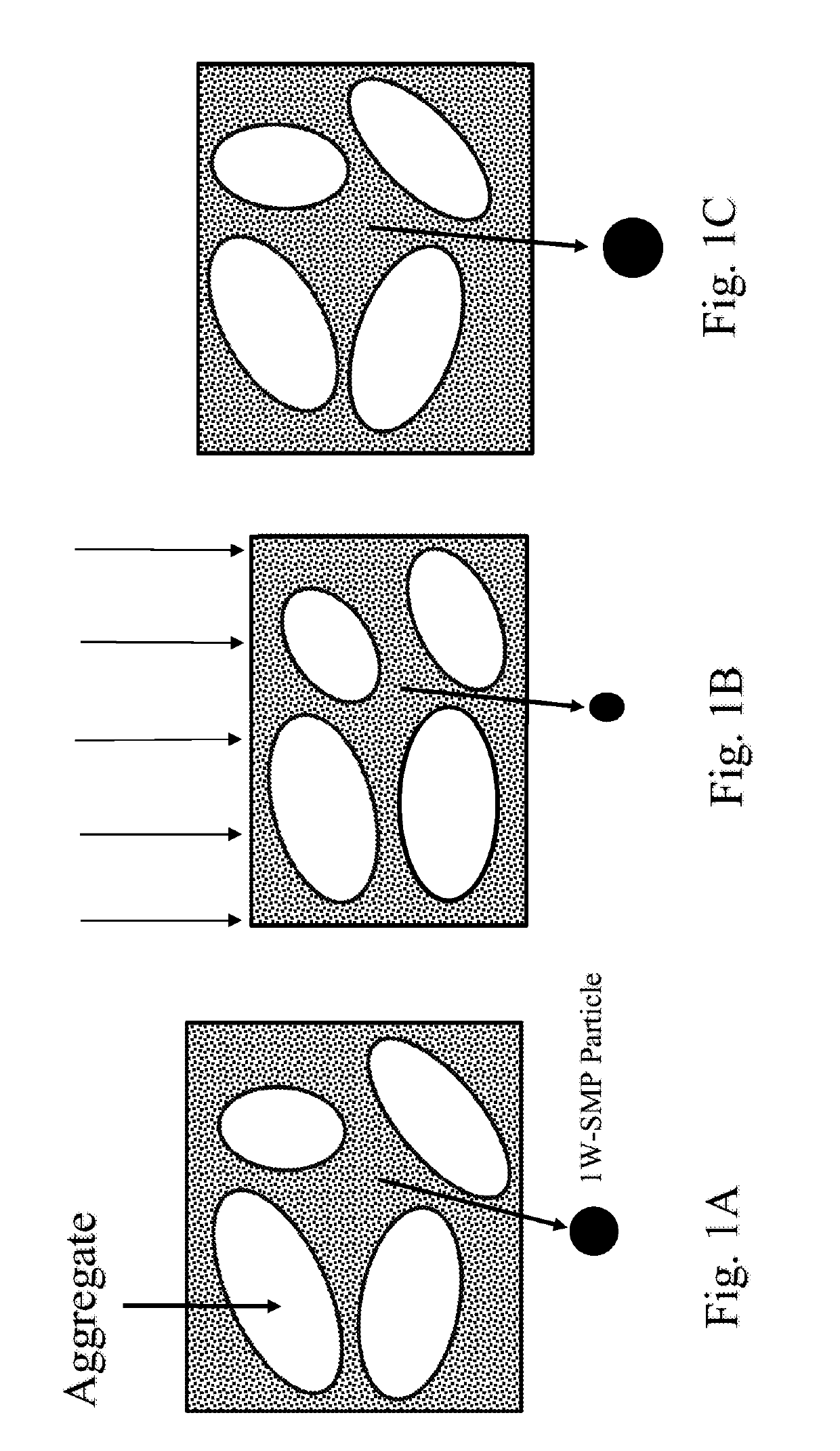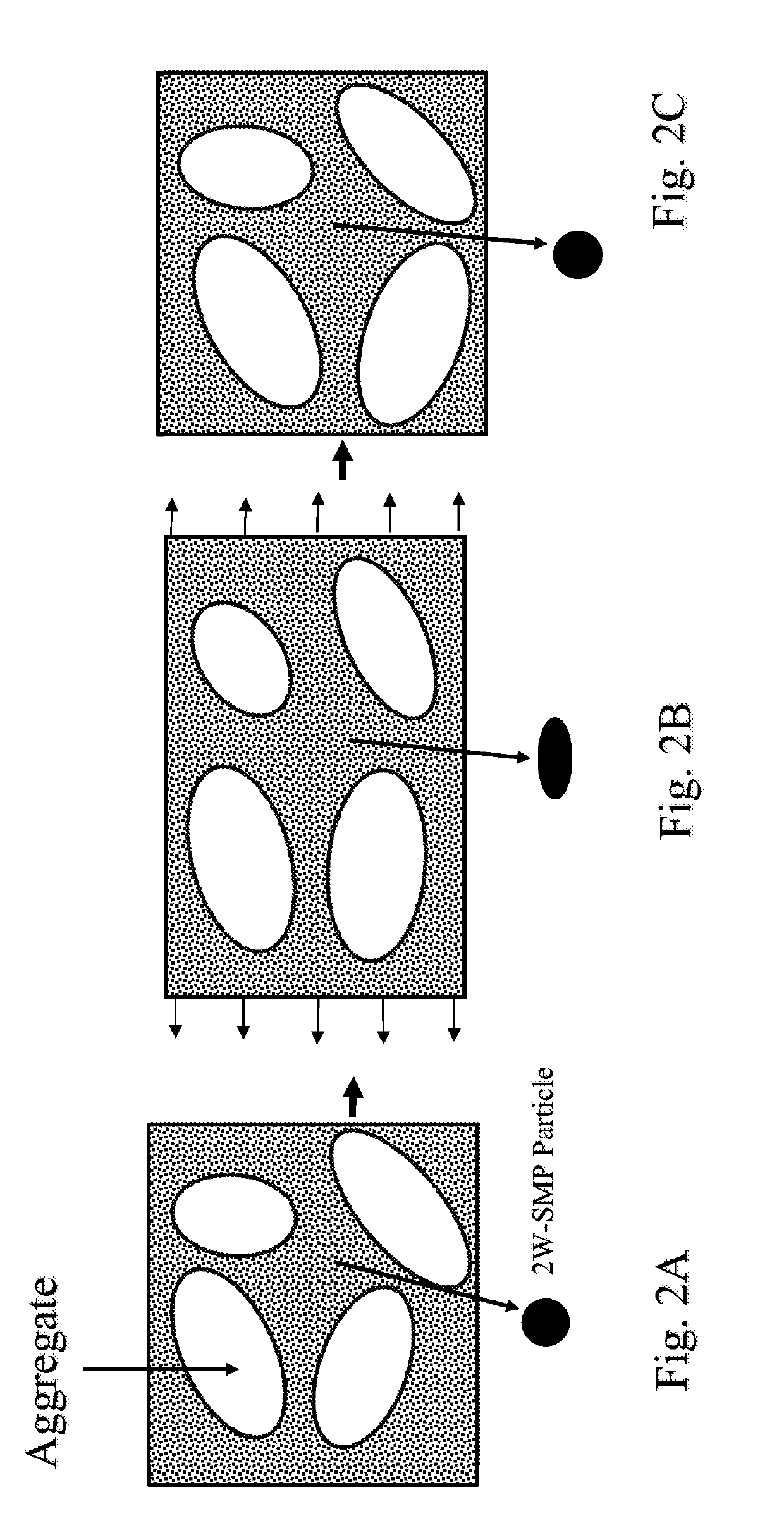Smart Rutting and Cracking Resistant Asphalt Pavement Incorporating Shape Memory Polymers
a technology of shape memory and asphalt pavement, which is applied in the direction of in situ paving, roads, building components, etc., can solve the problems of asphalt pavement cracking, premature failure of asphalt pavement, loss of riding comfort, etc., and achieve the effect of reducing thermal stress, reducing cracking and rutting, and melaorating low-temperature cracking and high-temperature rutting simultaneously
- Summary
- Abstract
- Description
- Claims
- Application Information
AI Technical Summary
Benefits of technology
Problems solved by technology
Method used
Image
Examples
Embodiment Construction
[0023]Embodiments of the invention include two SMP systems, and four manners of incorporating the SMPs, in order to solve rutting and cracking problems in asphalt pavement:
[0024]A One-SMP System.
[0025]A two-way shape memory polymer is used that exhibits 1W-SME (expansion) under compression programming at high temperature, and 2W-SME (expansion) triggered by tensile stress at low temperature. Various chemically cross-linked semi-crystalline shape memory polymers exhibit this combination of 2W-SME at low temperature and 1W-SME at high temperature, for example: polybutadiene with 98% cis content, poly(ethylene-co-vinyl acetate), ionomer, polyurethane, polyethylene, polycaprolactone, or polycyclooctene. The polymer should have very high entropy (a large number of configurations) at high temperatures, and high crystallinity at low temperatures. Polymers with C═C double bonds in the molecule backbone favor the formation of more configurations, i.e., a higher entropy:
S=kB ln W
where S the c...
PUM
| Property | Measurement | Unit |
|---|---|---|
| temperature | aaaaa | aaaaa |
| temperature | aaaaa | aaaaa |
| temperature | aaaaa | aaaaa |
Abstract
Description
Claims
Application Information
 Login to View More
Login to View More - R&D
- Intellectual Property
- Life Sciences
- Materials
- Tech Scout
- Unparalleled Data Quality
- Higher Quality Content
- 60% Fewer Hallucinations
Browse by: Latest US Patents, China's latest patents, Technical Efficacy Thesaurus, Application Domain, Technology Topic, Popular Technical Reports.
© 2025 PatSnap. All rights reserved.Legal|Privacy policy|Modern Slavery Act Transparency Statement|Sitemap|About US| Contact US: help@patsnap.com


